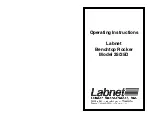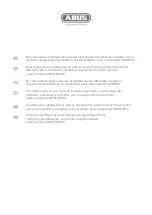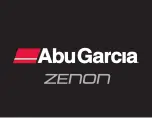
Refrigeration Maintenance
130
The battery voltage is shown and all normally
closed refrigeration valves are opened. They will
remain open until the EXIT key is pressed or the
battery voltage falls below a minimum voltage.
Figure 158: Battery voltage
Proceed with system leak check or evacuation.
Leak Check System
NOTE: Refer to Diagnosing Thermo King
Refrigeration Systems (TK-5984-10) for leak
detection procedures.
1. Put the unit into Evacuation Mode (see “Using
The Evacuation Mode Menu” on page 129).
2. Connect leak test gas (R-404a) supply to
center hose of gauge manifold.
3. Attach gauge manifold hoses to the suction
service valve and the discharge service port. A
low loss fitting must be used on the hose
connected to the discharge service port.
4. Pressurize the system with leak test gas. If
desired, system pressure may be boosted using
nitrogen gas.
5. Check connections made during installation
for leaks using electronic leak detector and/or
soap bubbles.
6. Recover test gas to repair leaks. System must
be vented while repairing solder joint leaks.
Pressurize system and check again after a leak
has been repaired.
7. If no leaks are found recover test gas to 0 psi.
Unit Evacuation
NOTE: Do not attempt to evacuate the unit until
the evacuation equipment has been tested and its
performance has been verified.
1. Prepare the unit for evacuation. Recover
refrigerant to 0 psig (0 kPa).
NOTE: New Federal Regulations may
require your recovery machine to pull the
system’s pressures lower than 0 psig [0 kPa].
2. Put the unit into Evacuation Mode (see “Using
The Evacuation Mode Menu” on page 129).
3. Install the evacuation station hoses on the
receiver tank outlet valve, suction service
valve, and discharge service port. A low loss
fitting must be used on the hose connected to
the discharge service port.
4. Mid-seat the receiver tank outlet valve and
suction service valve, and install the valve
stem caps.
5. Connect a gauge manifold and refrigerant
supply to the charging port above valve V-4.
Bottle valve closed.
6. Start the vacuum pump and open valves V-1,
V-2, V-3, V-4.
7. Evacuate the system to 500 microns or the
lowest achievable level between 500 and 1000
microns.
NOTE: The presence of refrigerant in the
compressor oil may prevent a low micron
reading from being achieved. The oil can
continue to “outgas” for long periods of
time. If the micron level appears to stall after
1/2 hour or 45 minutes between 1000 and
1500 microns, back seat the suction service
valve and observe the micron gauge. A sharp
drop in the micron reading (300 to 500
microns) would indicate that refrigerant is
present in the oil or a leak exists in the
compressor area. The micron gauge reads
“ATM” if there is a leak to the atmosphere.
See Figure 152 on page 128.
WARNING: Do not set battery charger to
the “crank” or “start” position, otherwise
the HMI display will be damaged.
CAUTION: Do not attempt to evacuate a
unit until you are certain that the unit is
leak free. A unit with less than a full
refrigerant charge should be thoroughly
leak checked and all leaks must be
repaired.
Summary of Contents for SPECTRUM TS 30 SR NAD
Page 4: ...4 ...
Page 10: ...Table of Contents 10 ...
Page 20: ...Safety Precautions 20 ...
Page 51: ...Unit Description 51 Figure 19 Front View Figure 20 Back View AJA1350 AJA1500 ...
Page 52: ...Unit Description 52 1 On Off Switch Figure 21 Side View 1 ...
Page 60: ...Unit Description 60 ...
Page 80: ...SPECTRUM TS Operation 80 ...
Page 90: ...Electrical Maintenance 90 ...
Page 100: ...Engine Maintenance 100 Figure 130 Early TK 3 95 Fuel and Oil System Components ...
Page 102: ...Engine Maintenance 102 Figure 131 Late TK 3 95 Fuel and Oil System Components ...
Page 104: ...Engine Maintenance 104 Figure 132 TK376 Fuel and Oil System Components ...
Page 136: ...Refrigeration Maintenance 136 ...
Page 156: ...Hilliard Clutch Maintenance 156 ...
Page 158: ...Structural Maintenance 158 ...
Page 168: ...Remote Evaporator Specifications 168 ...
Page 170: ...Remote Evaporator Maintenance Inspection Schedule 170 ...
Page 176: ...Remote Evaporator Electrical Maintenance 176 ...
Page 180: ...Remote Evaporator Refrigeration Service Operations 180 ...
Page 182: ...Remote Evaporator Structural Maintenance 182 ...
Page 184: ...Remote Evaporator System Diagnosis 184 ...
Page 188: ...Wiring and Schematic Diagrams Index 188 ...
Page 189: ...189 Wiring Diagram Page 1 of 4 ...
Page 190: ...190 Wiring Diagram Page 2 of 4 ...
Page 191: ...191 Wiring Diagram Page 3 of 4 ...
Page 192: ...192 Wiring Diagram Page 4 of 4 ...
Page 193: ...193 Schematic Diagram Page 1 of 3 ...
Page 194: ...194 Schematic Diagram Page 2 of 3 ...
Page 195: ...195 Schematic Diagram Page 3 of 3 ...
Page 196: ...196 ...
















































